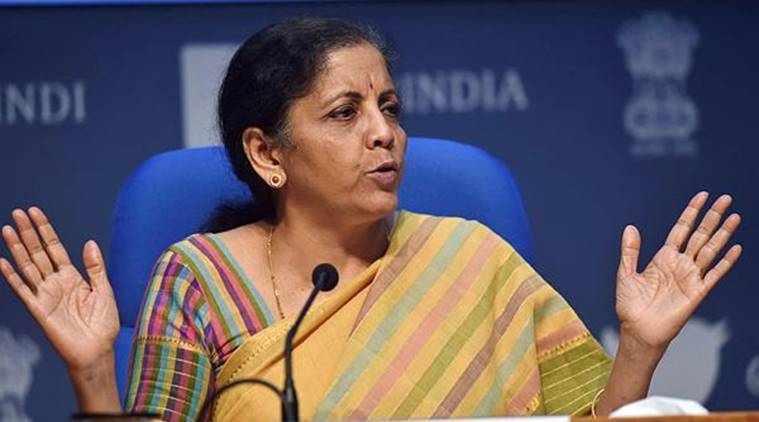Sandeep Mishra
The Atmanirbhar Bharat Scheme (ABS), the second tranche of COVID-19 relief rolled out by the PM promises a stimulus of Rs 20 trillion to prop up the economy through channelization of credit to the affected sectors and also by way of reforms pertaining to land, labour and law.
The FM has addressed among other things the credit channelization ostensibly through the “non-fund” route ie, by way of credit guarantees to the MSME sector. Government finances are under stress due to the slowdown in the economy post demonetisation, falling tax revenues and limited ability to raise debt due to the restrictions imposed by the FRBM act.
This possibly constrained the Centre from rolling out a “fund-based” impetus.
ABS is more about tweaking the status quo rather than an outright stimulus. The grandiose announcement was high on pomp and optics considering the fact that a large part of the package has already been rolled out earlier (Rs 6.5 trillion by RBI & Rs 1.7 trillion by the govt.).
It remains to be seen to what extent ABS shall actually deliver considering the fact that there is limited component of direct expenditure coupled with delay in implementation. This may have a significant time lag in having the desired effect.
Most of the support is by way of credit guarantees, a contingent liability in the government’s Balance Sheet where the actual cash outgo is subject to invocation of guarantees extended.
Taking a que from the borrowing numbers released by the govt., the incremental flow from this package is expected to be around Rs 2.4 trillion in terms of actual fiscal outgo — if we assume that the govt. shall not breach the Rs 12 trillion borrowings for the fiscal year and net borrowings of the Rs 9.6 trillion levels budgeted borrowing plan announced last week. Significantly, while the govt. has directly or indirectly addressed the liquidity issue, there is no clear-cut answer to the vexed question of reviving demand, something that has been elusive post demonetisation. Needless to mention, the government should have adopted a balanced approach by infusing liquidity directly (with amendment to the FRBM act) into the hands of the MSMEs for instant multiplier effect.
While some may argue that the reduction in EPF contribution and reduction in TDS shall release more cash in the hands of consumers and aid in demand, they are in essence reduction in savings and prove to be detrimental for the individuals by denting their retirement corpus).
The reduction in TDS essentially is deferment of liabilities and unlikely to have any significant impact in the short term. Expectations were that the subsequent announcements shall holistically address the demand side issues.
Notwithstanding the nature of the stimulus, one cannot ignore the fact that measures rolled out by the government shall provide some minor fillip to the MSME sector. Notably, the MSME sector in India has been ravaged by a series of events. Major references in this context are the demonetisation of currency in 2016, the haphazard and unstructured implementation of GST, the liquidity crunch triggered by a series of defaults arising out of the IL&FS fiasco and the COVID 19 crisis that has proven to be the final nail on the coffin.
The contribution of the MSMEs can be gauged from the fact that this sector accounts for about 45 per cent of manufacturing output, more than 40 per cent of exports, over 28 per cent of gross domestic product (GDP) and generates employment for about 111 million people.
The government has provided a breather by way of a rollout of Rs 3 trillion loan, collateral free package backed by a credit guarantee which is expected to help the MSME tide over the cash flow mismatches arising out of the present crisis.
Considering the fact that the credit risk is assumed by the government for Principal and Interest payment, banks should not have any inhibition in opening the credit tap for the needy which was the issue earlier.
While it is expedient to disburse the loans as fast as possible –given that the window is for a limited period of 3 months — in the best interests of the sector, banks should have a hawk’s eye and prevent a situation wherein unscrupulous managers and borrowers use this stimulus window to siphon away funds. This can easily lead to a spurt in NPAs, which were of the order of Rs 10lakh crore some time ago. This figure has come down only marginally in the past year or two.
In terms of additional measures, the subordinated debt package of Rs 20,000 crore partially guaranteed by the government to revive stressed MSMEs is also a good step in nursing ailing MSMEs with viable business models back to health.
A venture fund of Rs 50,000 crore (funded by the government to the extent of Rs 10,000 crore and the remaining to be funded by institutions etc) shall boost the start-up ecosystems, if implemented properly.
Conspicuous however is the 45 days’ time accorded for release of all due payments to MSMEs.
When the sector is grappling with cash flow issues, the receivables should have been released maximum within a seven working days’ time frame.
Other measures announced include Rs 30,000 crore Special Liquidity Scheme for NBFCs/HFCs, under which investment will be made in both primary and secondary market transactions in the investment grade debt paper of NBFCs/HFCs.
A Rs 45,000 crore Partial Credit Guarantee Scheme (PCGS) 2.0 for NBFCs with low credit rating and a Rs.90,000 crore relief for discoms by way of receivable funding from PFC and REC shall have the desired effect in nursing the affected sectors back to health.
While it is difficult for the government to address all issues in a jiffy, a beginning has been made! Implementation is the key and the government should pursue them with vigour.
The writer is a senior executive in a multinational bank based out of New Delhi.
